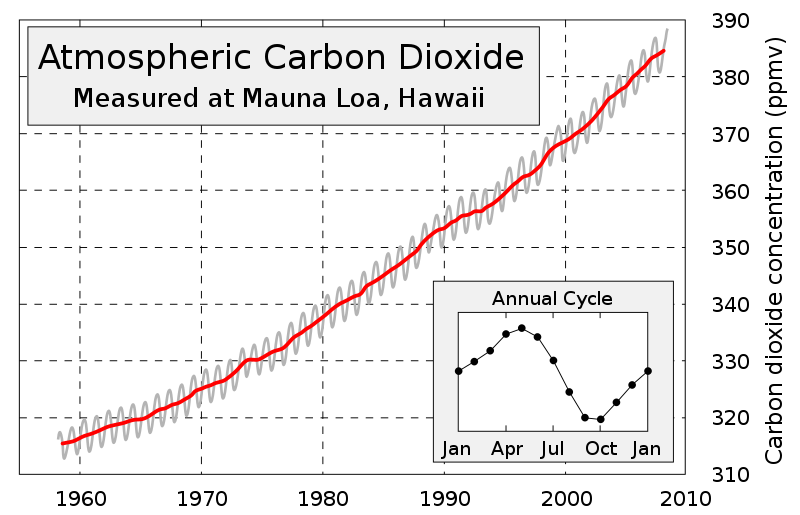ไฟล์:Mauna Loa Carbon Dioxide-en.svg
หน้าตา

ขนาดของตัวอย่าง PNG นี้ของไฟล์ SVG นี้: 800 × 515 พิกเซล ความละเอียดอื่น: 320 × 206 พิกเซล | 640 × 412 พิกเซล | 1,024 × 659 พิกเซล | 1,280 × 824 พิกเซล | 2,560 × 1,647 พิกเซล | 850 × 547 พิกเซล
ดูภาพที่มีความละเอียดสูงกว่า ((ไฟล์ SVG, 850 × 547 พิกเซล, ขนาดไฟล์: 16 กิโลไบต์))
ประวัติไฟล์
คลิกวันที่/เวลาเพื่อดูไฟล์ที่ปรากฏในขณะนั้น
| วันที่/เวลา | รูปย่อ | ขนาด | ผู้ใช้ | ความเห็น | |
|---|---|---|---|---|---|
| ปัจจุบัน | 17:19, 29 มิถุนายน 2551 |  | 850 × 547 (16 กิโลไบต์) | Sémhur | clean-up |
| 16:30, 27 มิถุนายน 2551 |  | 850 × 547 (31 กิโลไบต์) | Sémhur | Data updated (now, from 1958 to june 2008) | |
| 20:51, 23 เมษายน 2551 |  | 800 × 547 (33 กิโลไบต์) | Sémhur | Without the bitmap, it's better | |
| 20:48, 23 เมษายน 2551 |  | 800 × 547 (33 กิโลไบต์) | Sémhur | {{Information |Description= {{en|This figure shows the history of atmospheric carbon dioxide concentrations as directly measured at Mauna Loa, Hawaii. This curve is known as the [ |
หน้าที่มีภาพนี้
ไม่มีหน้าใดโยงมาที่ภาพนี้
การใช้ไฟล์ข้ามโครงการ
วิกิอื่นต่อไปนี้ใช้ไฟล์นี้:
- การใช้บน af.wikipedia.org
- การใช้บน ar.wikipedia.org
- การใช้บน en.wikipedia.org
- การใช้บน fr.wikipedia.org
- การใช้บน ko.wikipedia.org
- การใช้บน zh.wikipedia.org
